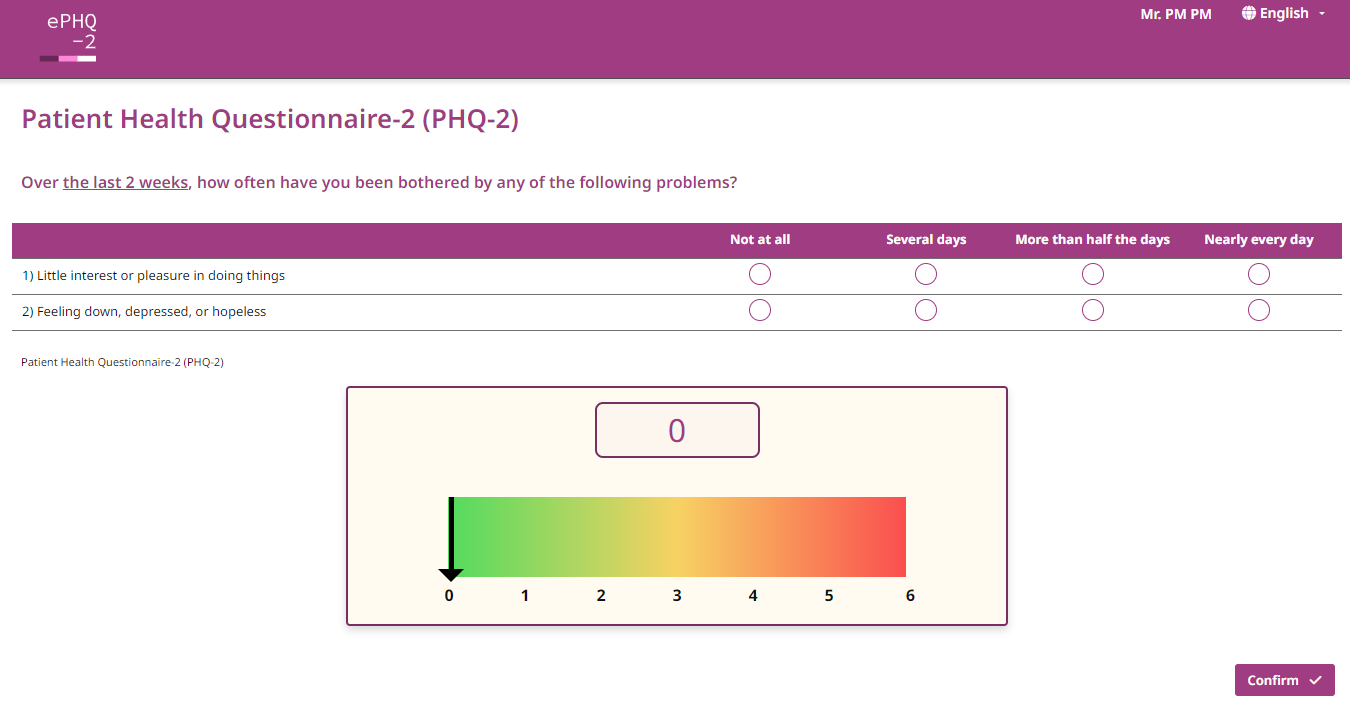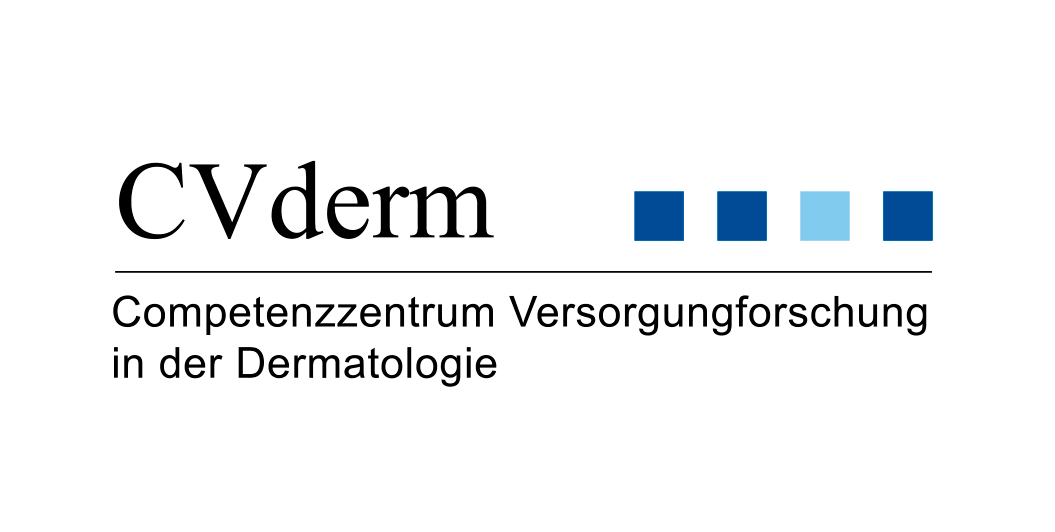Home
electronic Patient Health Questionnaire-2
ePHQ-2
Efficiently use PHQ-2
What is the ePHQ-2?
The ePHQ-2 is the electronic version of the PHQ-2, also known as the Patient Health Questionnaire-2, which is a brief screening tool used in healthcare settings to assess the presence and severity of depressive symptoms. It was derived from the more comprehensive PHQ-9 questionnaire and contains only two of the original nine items. The PHQ-2 is a patient-reported outcome that can be filled out by the patient alone. It is often used as a preliminary screening tool to identify individuals who may be experiencing depressive symptoms and require further evaluation.
Validation of questionnaire
paper version: yes digital version: no
How to use the ePHQ-2
Two questions are used in the PHQ-2 to inquire about impairment due to feeling down, depressed, or hopeless, as well as having little interest or pleasure in doing things. On a scale of 0 (Not at all) to 3 (Nearly every day), respondents indicate how often they have experienced these feelings in the last two weeks.
If a person scores 3 or higher when both questions are added together, an additional assessment using the full PHQ-9 or other diagnostic tools may be recommended to confirm the diagnosis of depression or to determine the appropriate treatment.

The following versions of the ePHQ-2 are available
The importance of measuring depressive symptoms in dermatological diseases
Measuring the PHQ-2 in dermatological diseases holds significant importance for several reasons. Firstly, it helps identify comorbid depression, which is prevalent in individuals with these conditions. By screening for depressive symptoms, healthcare providers can identify patients who require further evaluation and appropriate mental health support.
Secondly, the PHQ-2 enables the assessment of the psychological impact on quality of life. Dermatological diseases often lead to emotional distress, social isolation, and reduced self-esteem. By incorporating the PHQ-2 into routine evaluations, healthcare providers gain insights into the holistic well-being of patients, allowing them to tailor treatment plans that address both the physical and mental aspects of their condition.
Lastly, the PHQ-2 helps guide treatment decisions by identifying and addressing depressive symptoms early on. Depression can influence treatment outcomes, medication adherence, and overall satisfaction. By optimizing treatment plans and providing necessary psychological support, healthcare providers can improve overall patient outcomes.
Features
USER-FRIENDLY
The ePHQ-2 is self-explanatory and easy to use.
QUICK
The questionnaire consists of 2 questions, and it takes on average only 1 minute to complete.
INFORMED TREATMENT
The ePHQ-2 enables the physician to make informed treatment decisions based on patient-reported data.
MULTILINGUAL
The ePHQ-2 is available in different languages. The use of the respective first language reduces language barriers and supports the understanding between physician and patient.
MONITOR DEPRESSIVE SYMPTOMS
Use the ePHQ-2 to timely identify depressive symptoms.
ACCESSIBLE FROM ALL DEVICES
With DermaValue, your ePHQ-2 is always just a few clicks away. The application is available for PCs, tablets, smartphones, and other devices.
PATIENT-CENTRED
Results from the ePHQ-2 provide a patient-orientated analysis of the impact that chronic skin diseases have on patients' lives.
ACCURATE
Studies have shown that the PHQ-2 is highly accurate in identifying clinically significant depressive symptoms.
ENVIRONMENTALLY FRIENDLY
Take care of the environment and save your patient data on the online platform or as PDF files for yourself and your physicians.
Reference to Validation S
Kroenke, Kurt; Spitzer, Robert L.; Williams, Janet B. W. (2003): The Patient Health Questionnaire-2: validity of a two-item depression screener. In: Medical care 41 (11), S. 1284–1292. DOI: 10.1097/01.MLR.0000093487.78664.3C .
Löwe, Bernd; Kroenke, Kurt; Gräfe, Kerstin (2005): Detecting and monitoring depression with a two-item questionnaire (PHQ-2). In: Journal of psychosomatic research 58 (2), S. 163–171. DOI: 10.1016/j.jpsychores.2004.09.006 .
Our Further Tools
Our partners






